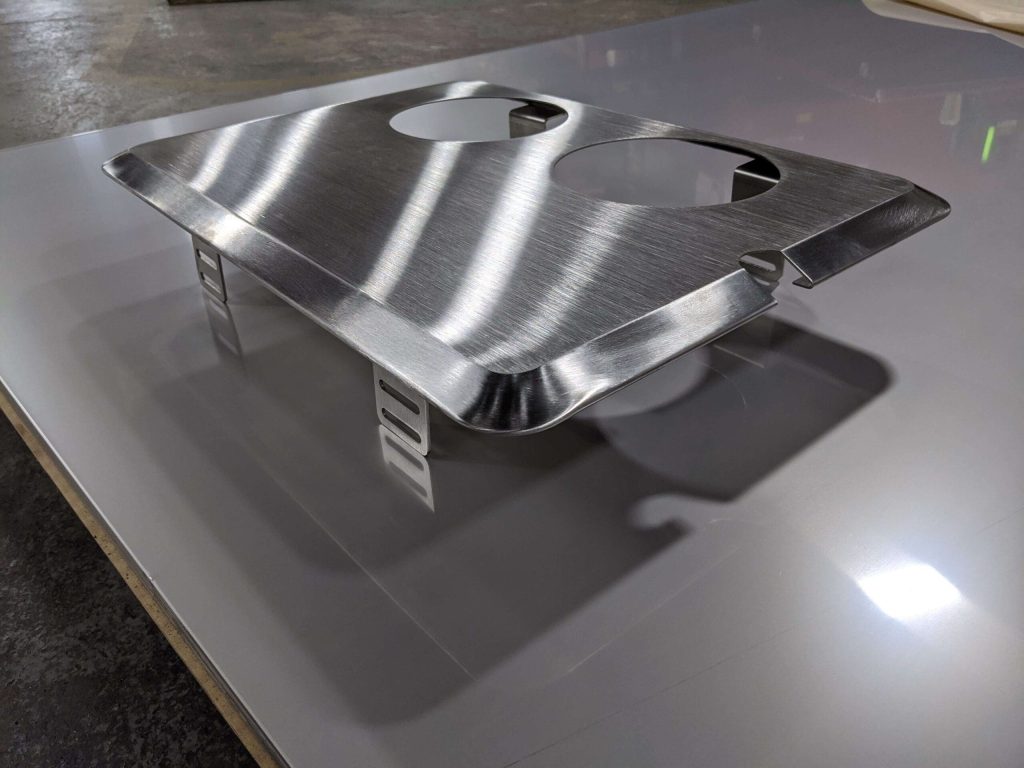
Sheet metal fabrication is a critical process in modern manufacturing, playing an essential role in the creation of prototypes across various industries. From automotive to medical devices, the ability to transform flat metal sheets into precise, functional parts enables engineers and designers to validate designs, reduce costs, and accelerate product development. In this article, we will explore what sheet metal fabrication is, why it is vital for prototyping, and how surface finishing further enhances prototype quality. For professional services, visit Boona Prototypes for comprehensive solutions.
I. What is Sheet Metal Fabrication?
Sheet metal fabrication involves shaping thin metal sheets through cutting, bending, stamping, and assembling to produce specific parts or components. Common materials include aluminum, stainless steel, and mild steel, each offering unique mechanical properties. The fabrication process allows for quick and cost-effective production of prototype parts that closely resemble the final product in both form and function.
II. Why is Sheet Metal Fabrication Important for Prototypes?
1. Cost-Effective Design Validation
Prototyping with sheet metal allows designers to test and refine their concepts before committing to large-scale manufacturing. By fabricating prototypes with real materials, companies can identify design flaws early, reducing the risk of expensive mistakes later.
2. Accelerated Time-to-Market
Rapid sheet metal prototyping shortens development cycles, enabling faster iterations and quicker approval processes. This speed is critical in competitive markets where time-to-market can determine product success.
3. Realistic Performance Testing
Unlike plastic or 3D-printed prototypes, sheet metal prototypes offer realistic mechanical strength, heat resistance, and durability. This enables thorough testing of fit, form, and function under actual operating conditions.
4. Enhanced Design Flexibility
Sheet metal fabrication supports complex geometries and quick adjustments, accommodating evolving design requirements and customization without significantly increasing costs.
5. Smooth Transition to Production
Prototypes made with the same fabrication processes and materials as the final product ensure seamless scale-up to production, minimizing surprises and ensuring consistency in quality.
III. Applications of Sheet Metal Prototyping Across Industries
| Industry | Typical Prototype Components |
|---|---|
| Automotive | Chassis parts, brackets, body panels |
| Aerospace & Defense | Airframes, structural supports |
| Electronics | Enclosures, mounting brackets |
| Medical Devices | Equipment housings, mounting plates |
| Consumer Goods | Appliance frames, lighting fixtures |
| Construction | Structural panels, architectural elements |
| Industrial Equipment | Machine parts, safety guards |
Source: Industry standard applications and client projects at Boona Prototypes
IV. The Role of Surface Finishing in Prototyping
Surface finishing not only improves the appearance of prototypes but also enhances functional properties such as corrosion resistance and wear durability. At Boona Prototypes, several finishing options are available to tailor prototypes to specific requirements:
| Finishing Type | Description | Benefits |
|---|---|---|
| Anodizing | Electrochemical process creating oxide layer | Improved corrosion and hardness |
| Polishing | Mechanical smoothing for glossy surface | Aesthetic appeal and smoothness |
| Powder Coating | Dry powder application and curing | Durable colored protective finish |
| Bead Blasting | Abrasive surface treatment for matte finish | Texture and cleaning |
| Black Oxide | Chemical treatment for matte black finish | Corrosion resistance and appearance |
| Electroless Nickel Plating | Chemical deposition of nickel-phosphorus alloy | Enhanced wear and corrosion resistance |
These surface treatments ensure your prototype not only functions correctly but also looks professional, supporting design reviews and marketing presentations. For detailed finishing options, see Boona Prototypes Surface Finishing.
V. Key Fabrication Parameters to Consider
| Parameter | Typical Range | Notes |
|---|---|---|
| Material Thickness | 0.3 mm – 6 mm | Thinner sheets for lighter parts; thicker for strength |
| Tolerance Accuracy | ±0.1 mm to ±0.5 mm | Depends on process and design complexity |
| Bend Radius | ≥ Material Thickness | Minimum radius to avoid cracks |
| Surface Roughness | Ra 0.8 – Ra 3.2 µm | Depends on finishing technique |
| Production Volume | Prototype runs to small batch | Scalable based on demand |
Data reference based on Boona Prototypes’ industry experience and standard fabrication guidelines.
VI. Challenges in Sheet Metal Prototyping
Despite its advantages, sheet metal prototyping presents challenges such as selecting the optimal material, meeting tight tolerances, handling complex designs, and balancing cost and speed. Partnering with experienced fabrication specialists like Boona Prototypes helps navigate these challenges efficiently.
Conclusion
Sheet metal fabrication is indispensable for producing functional, realistic prototypes that accelerate product development and reduce risks. Coupled with advanced surface finishing techniques, it delivers prototypes that meet both functional and aesthetic requirements. Whether you are in automotive, electronics, or medical device development, leveraging professional sheet metal prototyping services like those offered by Boona Prototypes ensures your projects succeed from design to production.
FAQs
Q1: What is sheet metal fabrication?
Sheet metal fabrication is the process of shaping thin metal sheets into specific parts using techniques such as cutting, bending, stamping, and assembling.
Q2: Why is sheet metal fabrication important for prototyping?
It allows for cost-effective, realistic, and functional prototypes that help validate design, test performance, and accelerate time-to-market.
Q3: What materials are commonly used in sheet metal prototyping?
Common materials include aluminum, stainless steel, mild steel, and sometimes copper or brass, chosen based on strength, weight, corrosion resistance, and cost.
Q4: How does surface finishing affect sheet metal prototypes?
Surface finishing improves appearance, protects against corrosion and wear, and can enhance functional properties of prototypes, making them closer to the final product.
Q5: What are typical fabrication tolerances for sheet metal prototypes?
Tolerances usually range from ±0.1 mm to ±0.5 mm depending on the complexity and precision requirements of the design.
Q6: Can sheet metal prototypes be used for functional testing?
Yes, because prototypes are made with actual materials and processes, they can be tested for fit, form, and function under realistic conditions.
Q7: How quickly can I get a sheet metal prototype made?
Lead times vary by complexity but can range from a few days to a couple of weeks. Rapid prototyping services can shorten this timeframe.
Q8: What industries benefit the most from sheet metal prototyping?
Automotive, aerospace, electronics, medical devices, consumer goods, construction, and industrial equipment are key industries that use sheet metal prototypes.
Q9: How does sheet metal prototyping support the transition to mass production?
Prototypes created with production materials and methods help identify manufacturing issues early, ensuring a smooth scale-up with consistent quality.
Q10: Where can I find professional sheet metal prototyping services?
Companies like Boona Prototypes specialize in high-quality sheet metal fabrication and finishing for prototyping needs.



